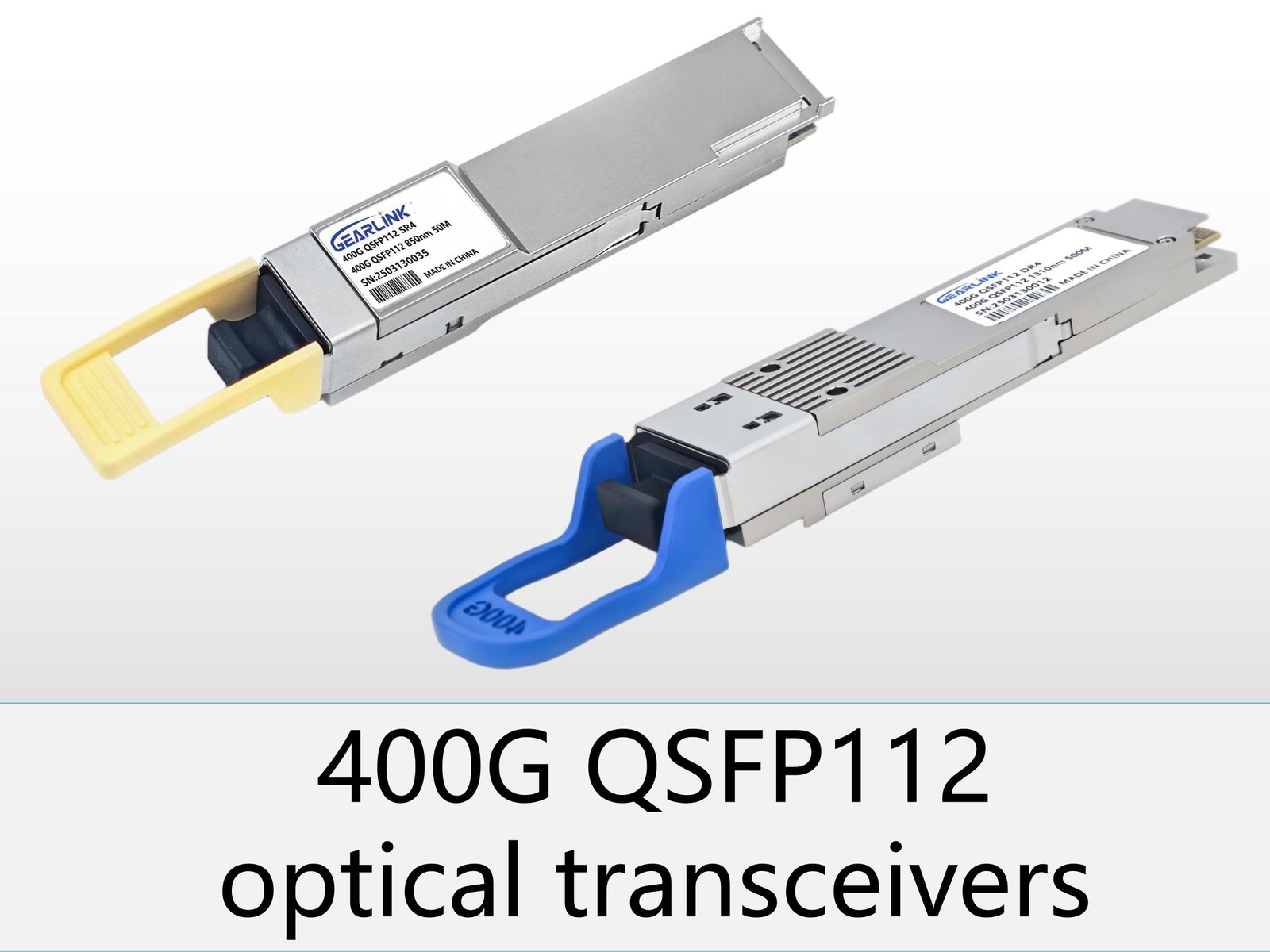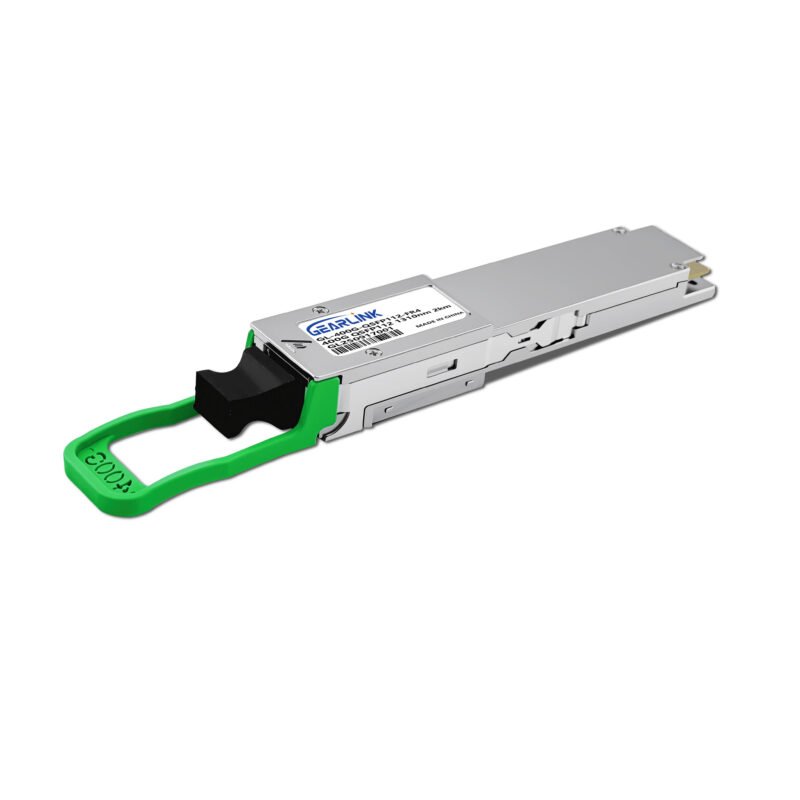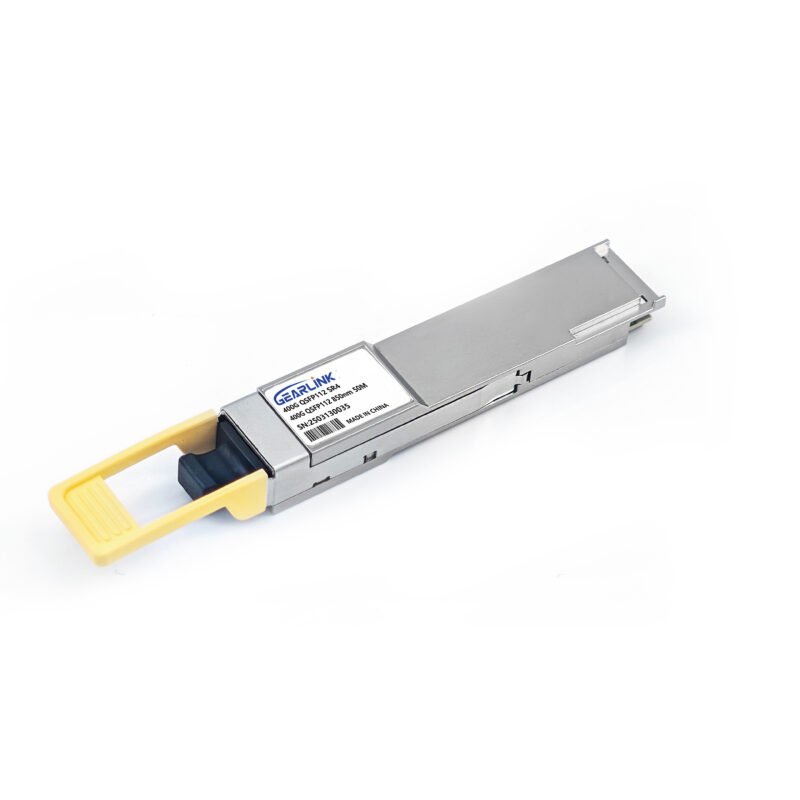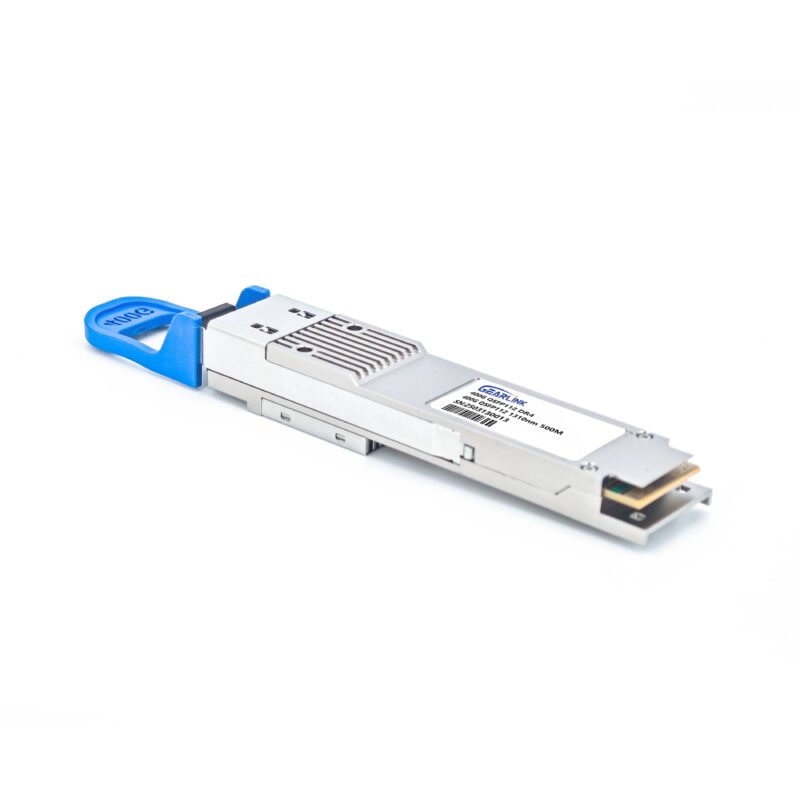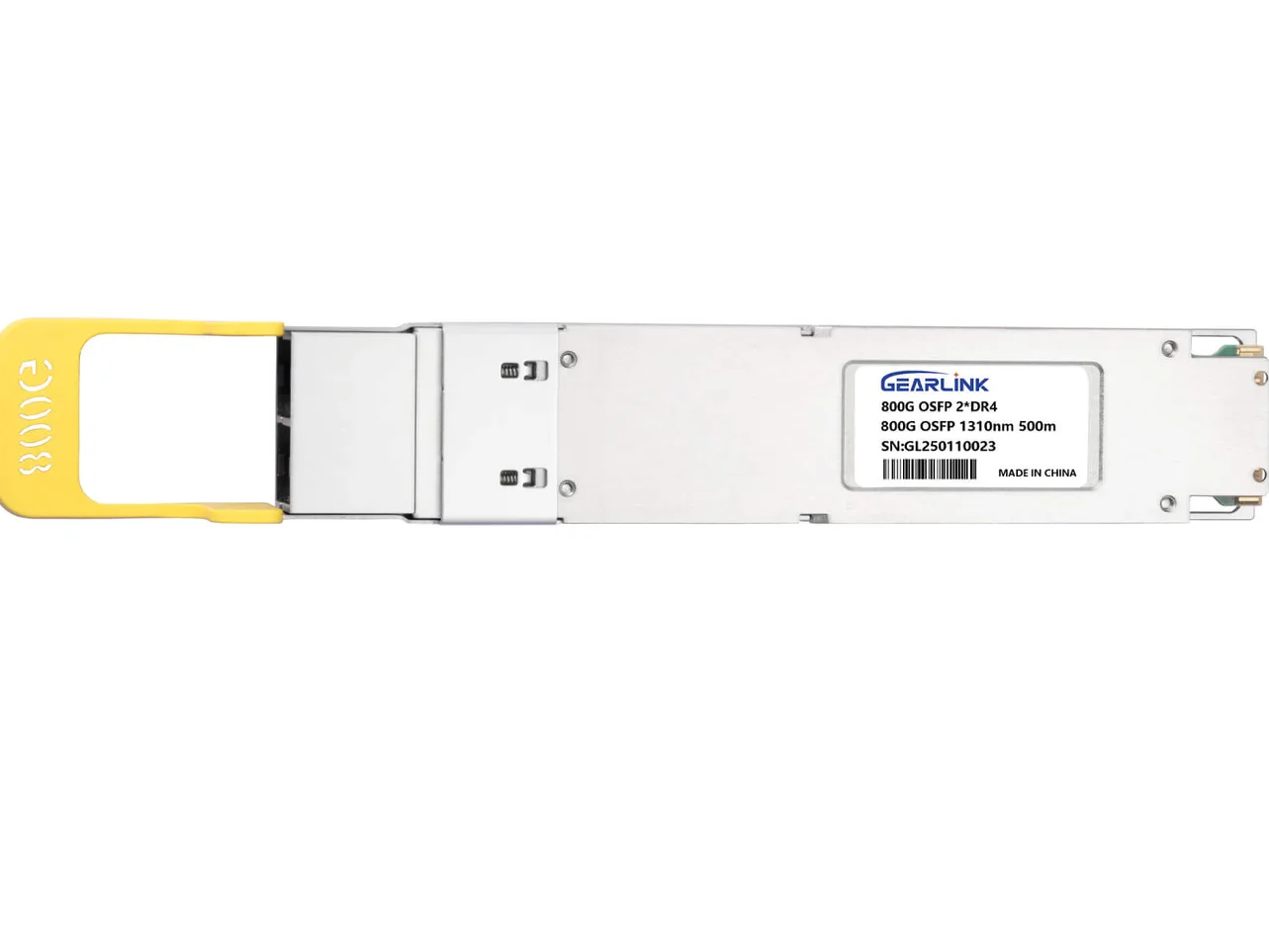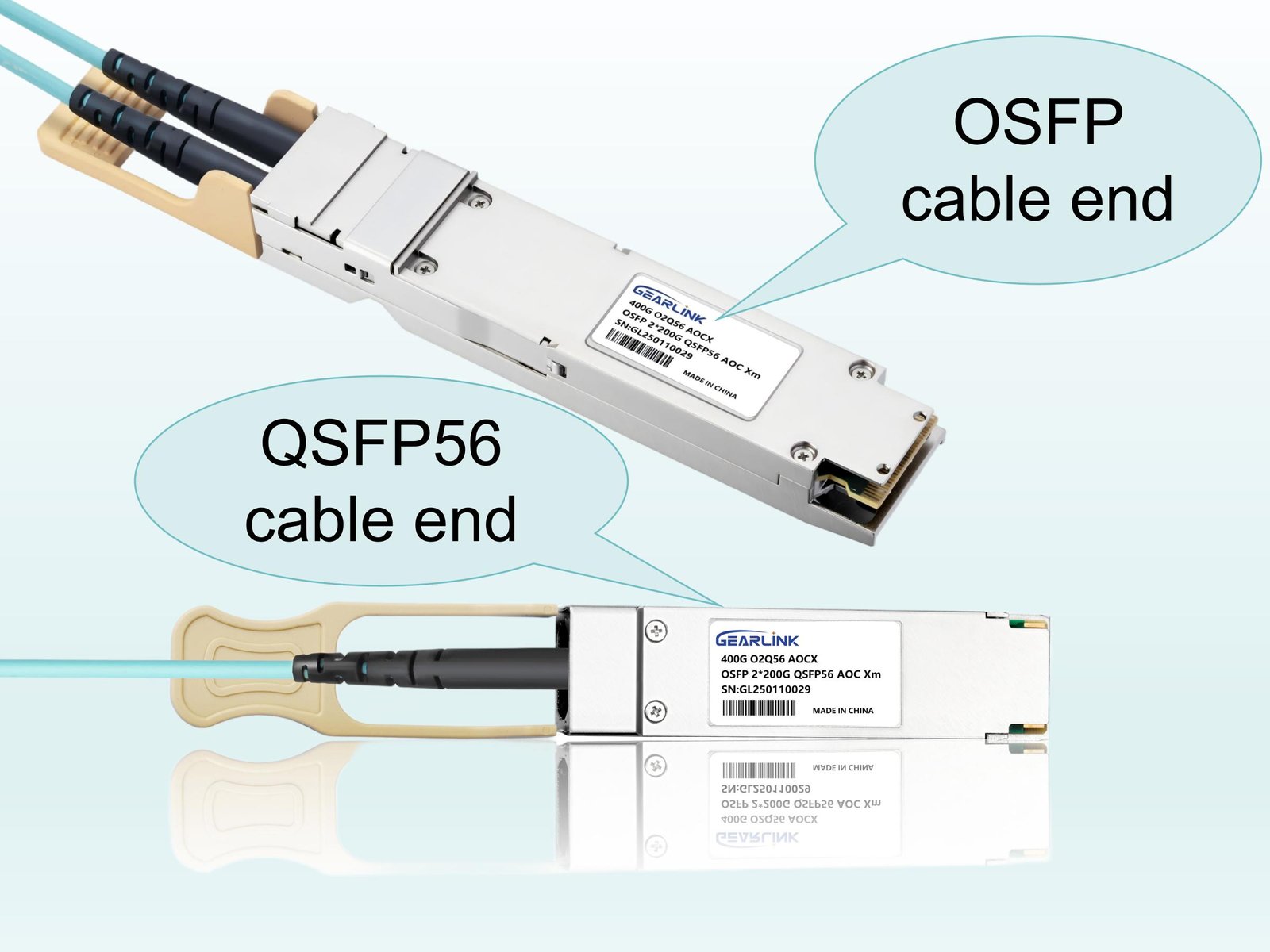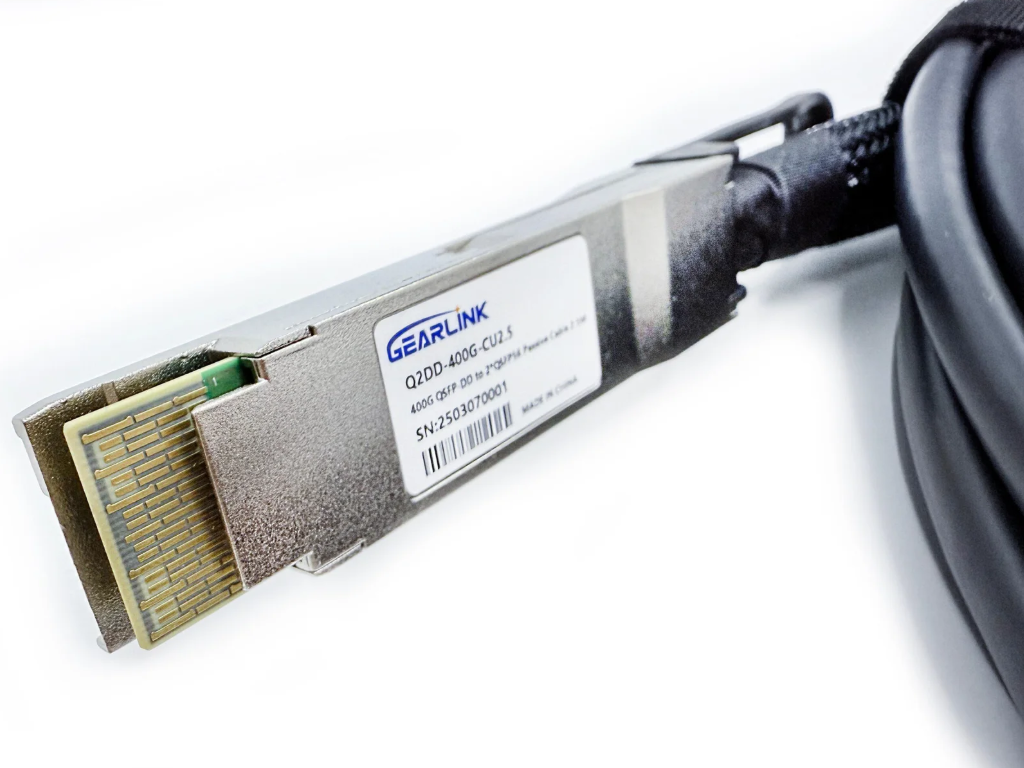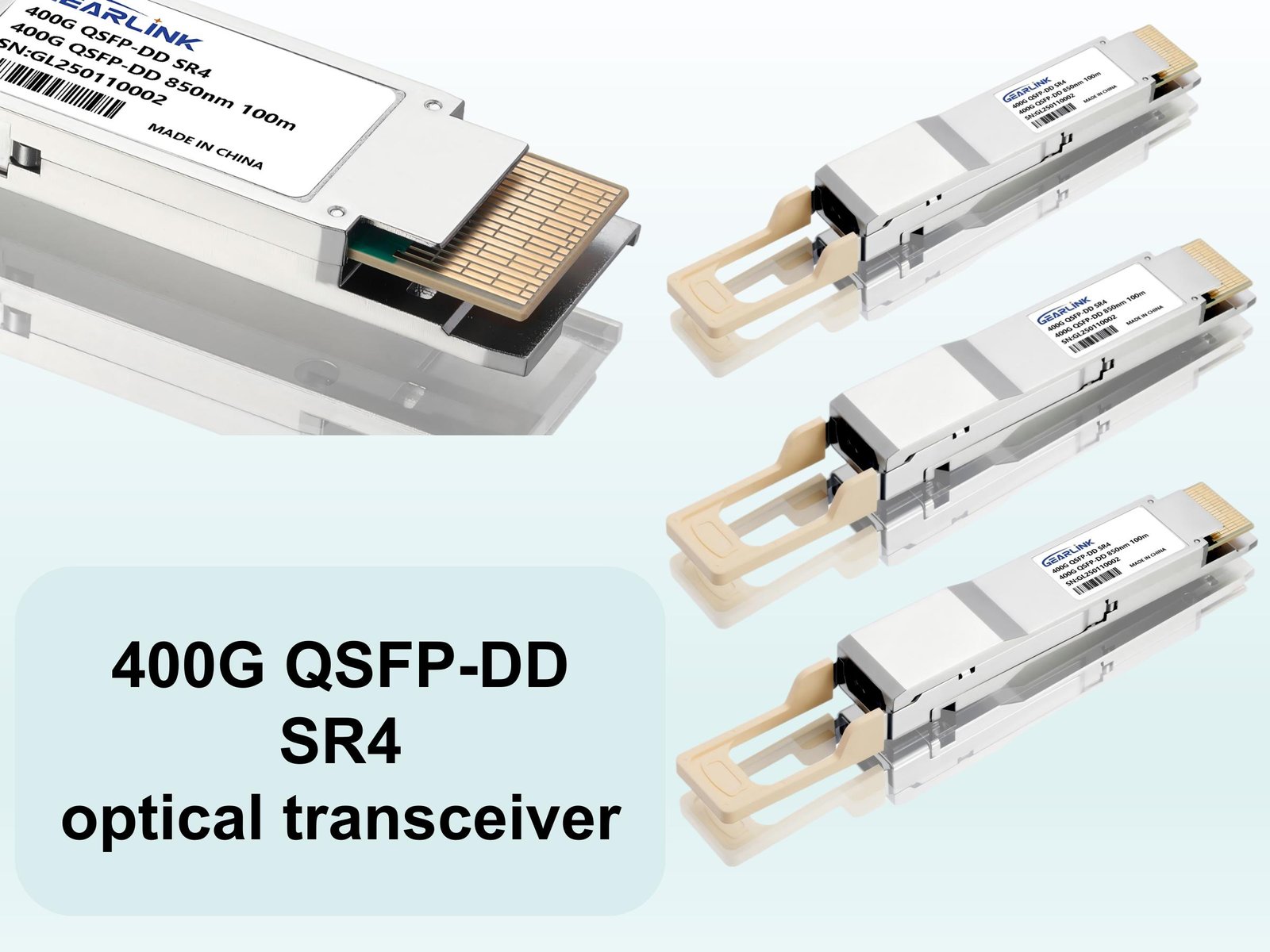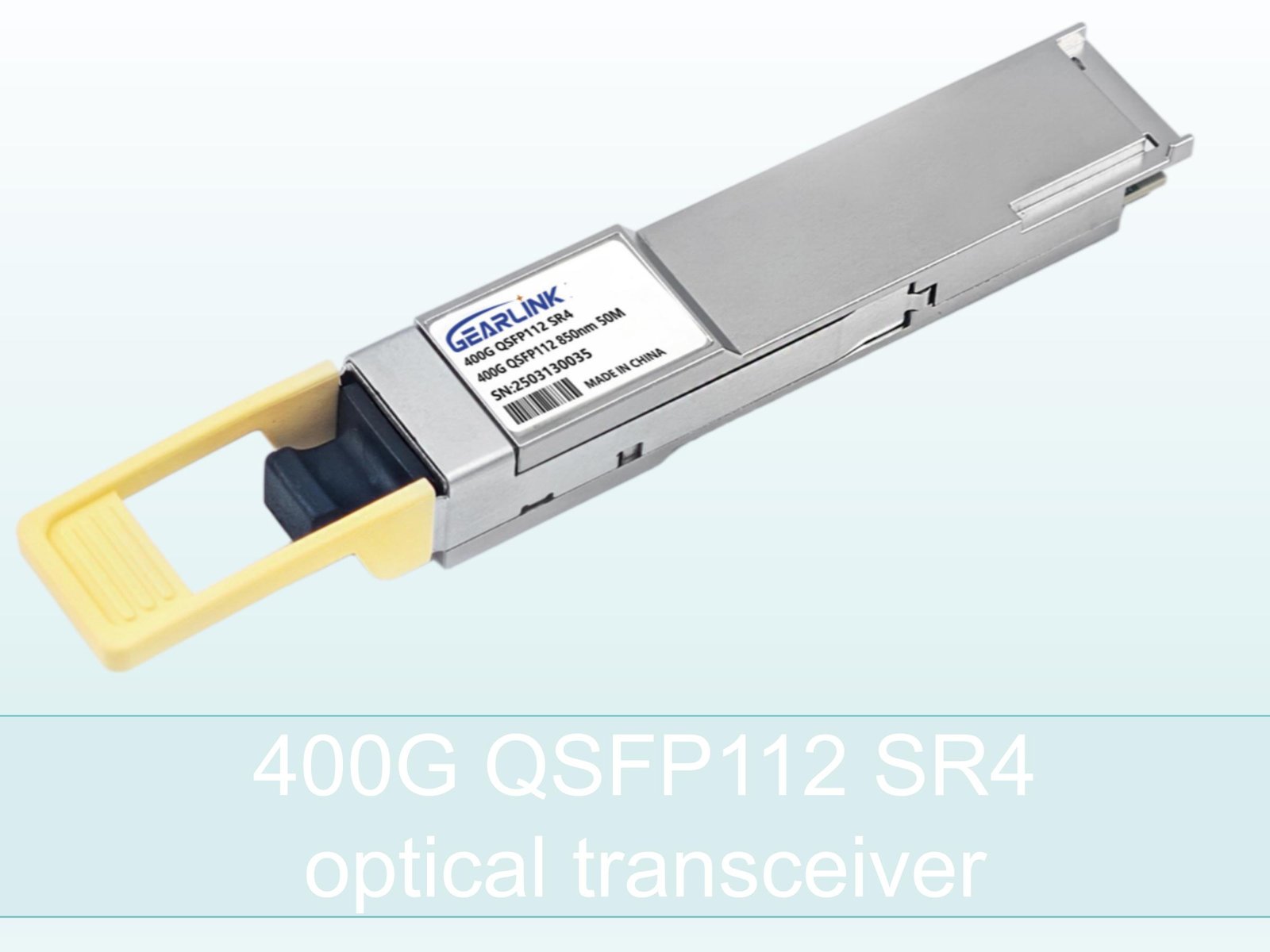Introduction to 400G QSFP112 Modules
The development of 400G QSFP112 modules has significantly enhanced high-speed networking. 400g transceivers are widely adopted in data centers, enterprise networks, and telecommunications. These modules are designed to meet the increasing demand for higher bandwidth and low-latency communication.
QSFP112, which stands for Quad Small Form-factor Pluggable 112, is defined under the QSFP112 MSA standard. It provides a compact design while supporting multiple channels of 100G or 50G per lane. The 400G optical transceiver is commonly used in hyperscale data centers where high-speed data transmission is required.
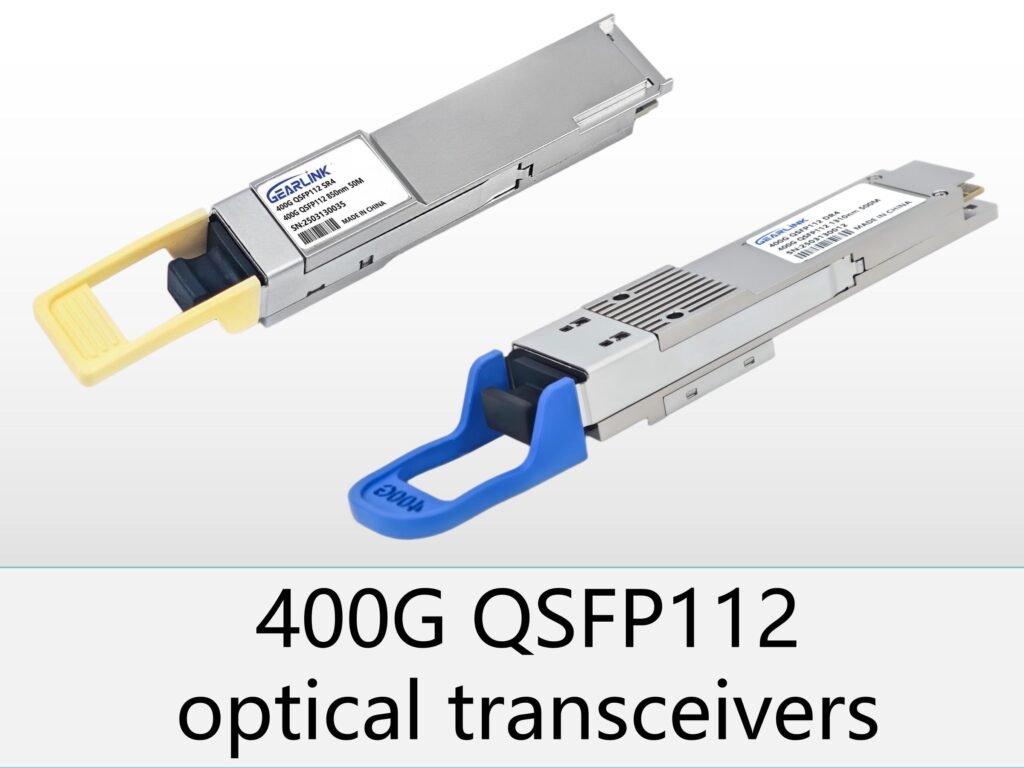
Key Features of 400G QSFP112 Optical Transceivers
The 400G QSFP112 modules are designed to provide high performance, reliability, and energy efficiency. Their key features include:
High-Speed Data Transmission
The 400g transceivers support data rates of up to 400 Gbps per module. Data transfer is ensured through advanced signaling technologies that reduce error rates and improve signal integrity. The modules are typically compliant with QSFP112 MSA specifications, which ensures interoperability across different manufacturers.
Compact and Efficient Design
QSFP112 modules are designed to be smaller in size than previous generations while maintaining high functionality. The 400G optical transceiver design allows for dense port deployments, which reduces space requirements in modern network switches.
Reliability and Heat Management
High-performance 400G QSFP112 modules are equipped with advanced thermal management. Heat is efficiently dissipated using integrated heat sinks and airflow designs. This ensures the 400g transceivers operate reliably even under heavy network loads.
Applications of 400G Optical Transceivers
The adoption of 400G QSFP112 modules has been driven by the need for higher bandwidth and improved network performance. Typical applications include:
Hyperscale Data Centers
In hyperscale data centers, 400g transceivers are deployed to handle massive amounts of data traffic. The 400G optical transceiver allows for scalable high-speed interconnects between servers and switches.
High-Performance Computing (HPC)
High-performance computing environments require ultra-low latency and high bandwidth. QSFP112 modules are increasingly being used in HPC clusters, providing high-speed data transmission with low power consumption.
Enterprise and Telecommunication Networks
Telecommunication providers are adopting 400G QSFP112 modules to upgrade their backbone networks. By using QSFP112 MSA compliant transceivers, service providers can ensure compatibility and scalability.
Benefits of Using QSFP112 MSA Compliant Transceivers
Standardization and Interoperability
The QSFP112 MSA standard ensures that 400G optical transceivers from different vendors can be used interchangeably. This reduces compatibility issues and simplifies procurement and deployment processes.
Energy Efficiency
400g transceivers designed under the QSFP112 MSA guidelines consume less power compared to legacy modules. Energy-efficient design helps data centers reduce operational costs while supporting higher data throughput.
Future-Proof Networking
Investing in 400G QSFP112 modules ensures that networks are prepared for future growth. With data demands constantly increasing, these modules provide a scalable solution that can support future upgrades.
400GBASE-FR4 QSFP112 PAM4 1310nm 2km DOM Duplex LC/UPC SMF Optical Transceiver Module
NT$750400GBASE-SR4 QSFP112 PAM4 850nm 50m DOM MPO-12/APC MMF Optical Transceiver Module
Price range: NT$699 through NT$799
400GBASE-DR4 QSFP112 PAM4 1310nm 500m DOM MPO-12/APC SMF Optical Transceiver Module
Price range: NT$669 through NT$799400GBASE-FR4 QSFP112 PAM4 1310nm 2km DOM Duplex LC/UPC SMF Optical Transceiver Module
NT$750
Choosing the Right 400G Optical Transceiver
When selecting a 400G QSFP112 module, several factors should be considered:
Transmission Distance
400G optical transceivers are available in various distance grades, from short-reach (SR) to long-reach (LR). Network requirements should be carefully evaluated to select the appropriate module.
Compatibility
It is essential to ensure that QSFP112 modules comply with QSFP112 MSA standards. This guarantees interoperability with existing switches and network equipment.
Environmental and Power Considerations
High-performance 400g transceivers are often deployed in environments with strict power and cooling limitations. Modules should be chosen based on thermal performance and energy efficiency.
Frequently Asked Questions About 400G QSFP112
Q1: What is a 400G QSFP112 module?
A 400G QSFP112 module is a high-speed 400G optical transceiver compliant with QSFP112 MSA standards, used for high-bandwidth data transmission in data centers and networks.
Q2: How many lanes does a QSFP112 transceiver support?
A QSFP112 transceiver supports 4 lanes of 100G each, or 8 lanes of 50G, enabling a total throughput of 400 Gbps.
Q3: Can QSFP112 modules from different vendors be used together?
Yes, if they are QSFP112 MSA compliant, interoperability between different vendor modules is ensured.
Q4: What types of applications use 400G optical transceivers?
400G transceivers are widely used in hyperscale data centers, high-performance computing, enterprise networks, and telecommunication backbones.
Q5: How is heat managed in 400G QSFP112 modules?
Heat is managed through integrated heat sinks, efficient airflow designs, and energy-efficient circuitry, ensuring reliable operation under high loads.
